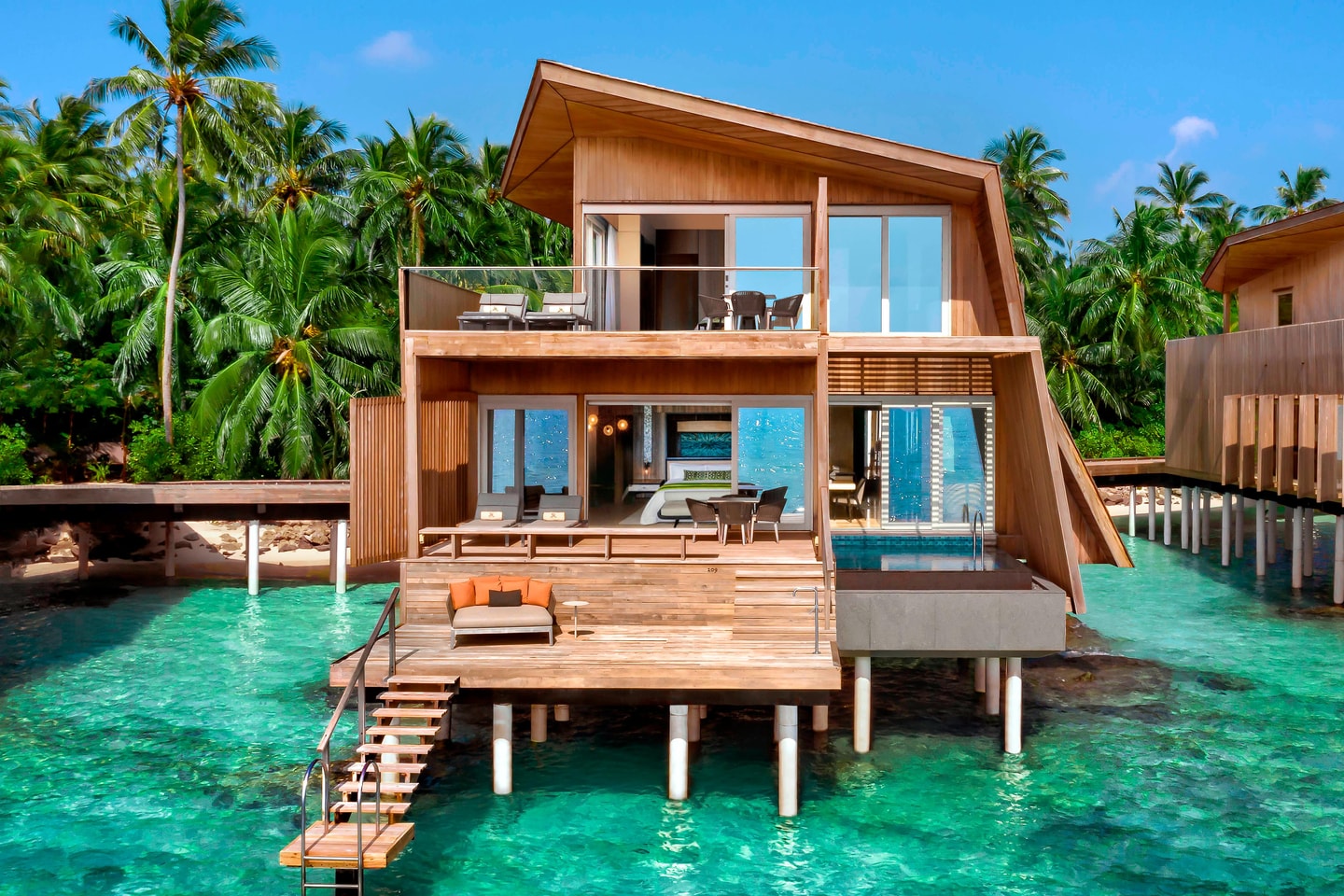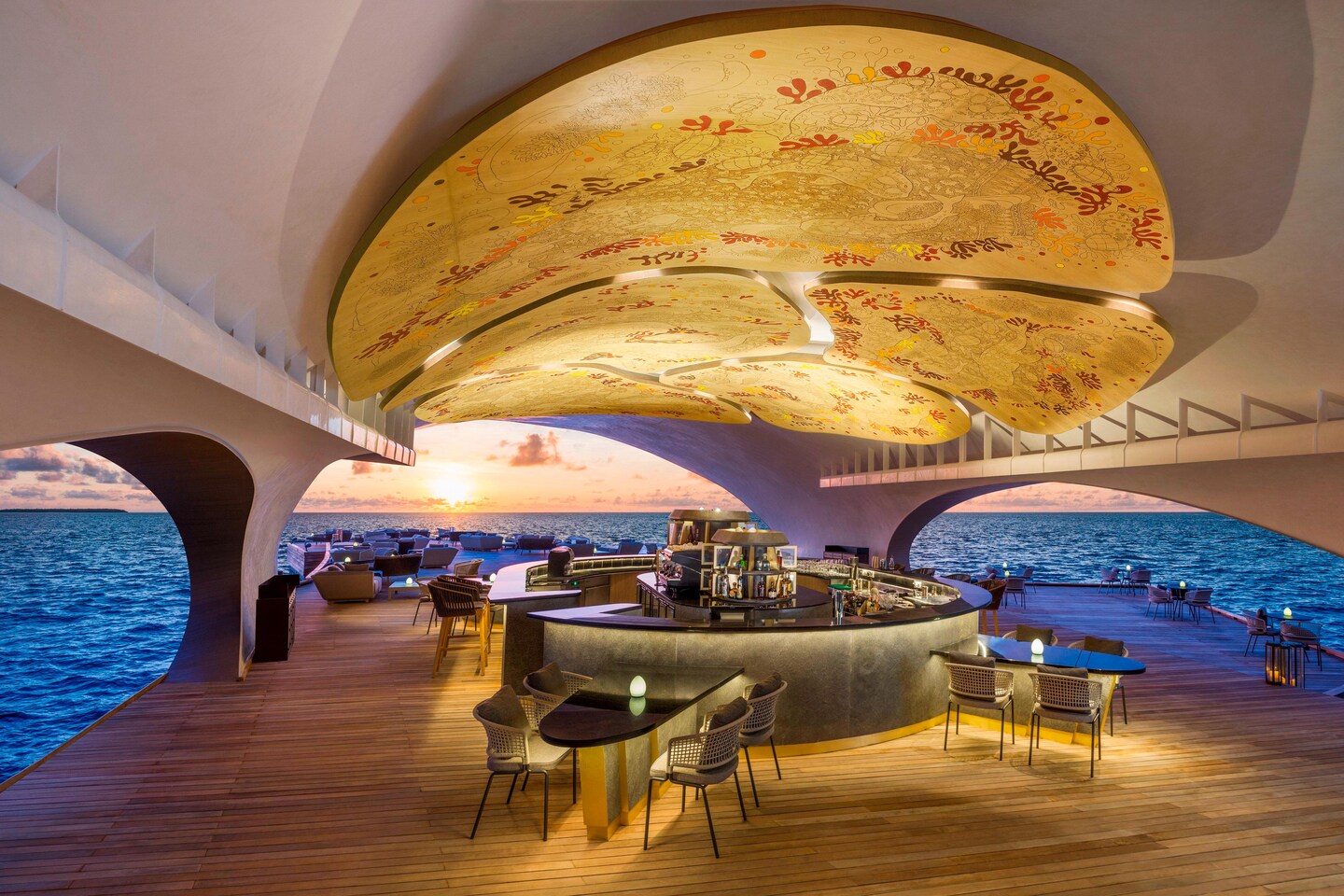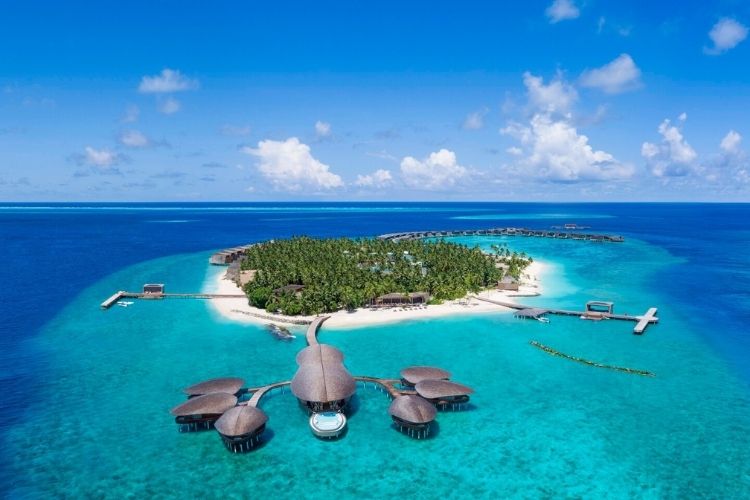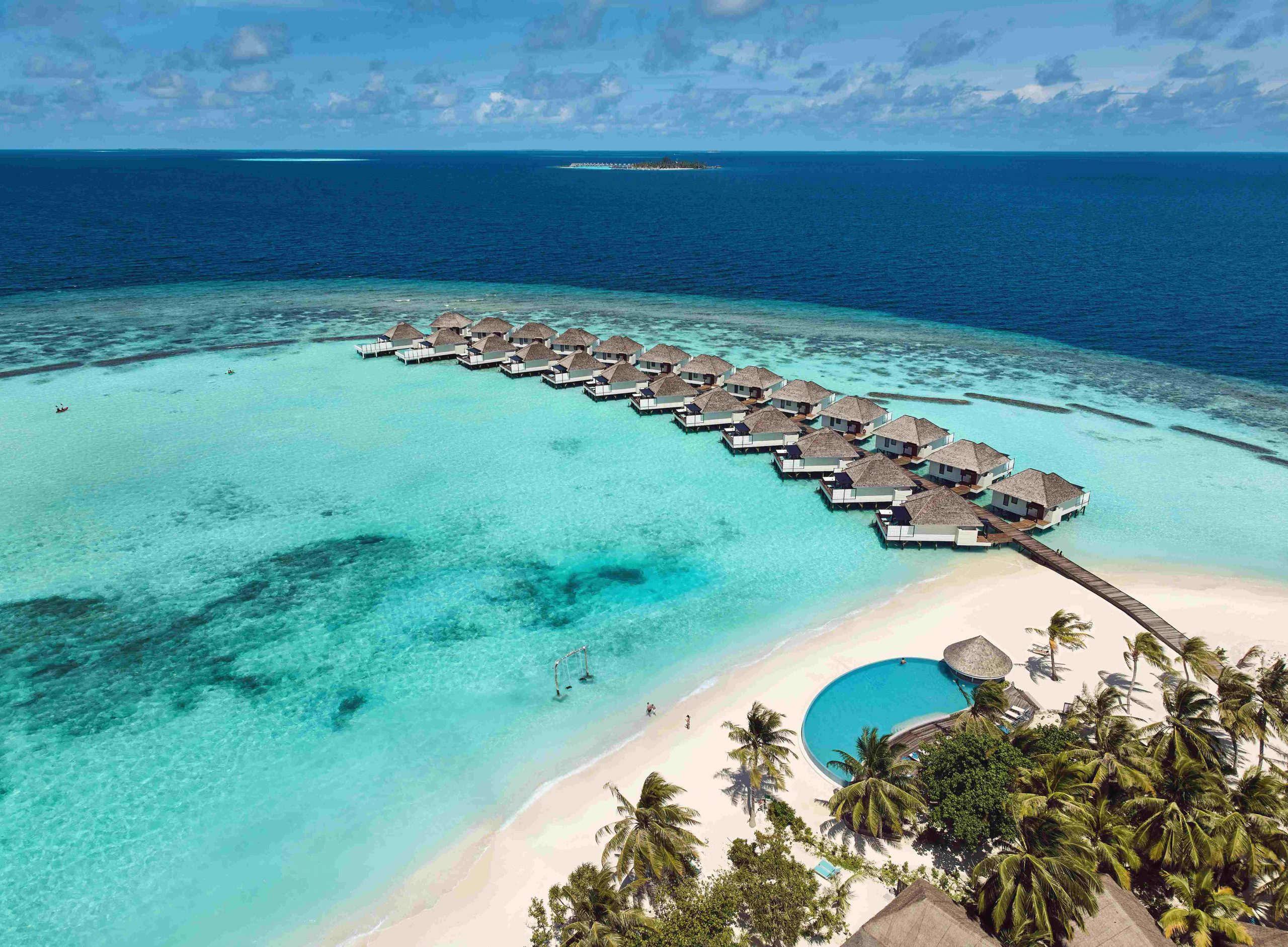The St. Regis Maldives Vommuli Resort has been featured among the ‘30 of the Most Beautiful Hotels in Asia’ by DestinAsian. The resort is reopening on 1st October 2020, with adherence to safety and new additions.
DestinAsian highlighted that the Maldivian outpost of the St. Regis brand stands out for its playful, retro-futuristic design by Singapore-based WOW Architects. Vommuli Resort offers a degree of seclusion that is unparalleled anywhere else in the world.
Accommodation
St. Regis Vommuli Resort offers 77 inspired accommodations options. This includes 44 overwater villas and 33 villas located on the beach. Furthermore, guests can enjoy unrestricted views of either the Indian Ocean or the island’s lush tropical gardens from their private terrace.

Image: St. Regis Maldives Vommuli Resort
In addition to that, guests can relax and reinvigorate the spirit in the luxury villa, featuring a state-of-the-art Bang & Olufsen BeoVision entertainment system, a private sparkling pool, and complimentary high-speed Wi-Fi. The resort also provides a discreet St. Regis Butler who is dedicated to making guests stay in the Maldives special and memorable.
Dining
A vast range of delightful dining venues is available at the resort. Visit Crust, the resort’s family-friendly pizzeria, and design your own pizza from a selection of either traditional Italian and other delicious toppings. Meanwhile, slip away to Decanter, a hidden subterranean restaurant, and enjoy a five-course dining experience paired with drink selections from the head sommelier.

Image: St. Regis Maldives Vommuli Resort
Guests can also relax with a cocktail at The Whale Bar and watch the sunset over the Indian Ocean or wander inland and dine at Cargo, a pop-up restaurant located amongst the resort’s tropical gardens.
New Additions
Vommuli Resort has launched Signature Floating Dining Rituals to offer guests an elevated level of privacy. Guests can indulge in a gastronomic journey, in the meantime take a dip in their very own private plunge pool. In addition to that, holidaymakers can also enjoy an opulent starlight dinner set along the beach to an unparalleled toes-in-the-sand cinema and dining experience, and much more.

Image: St. Regis Maldives Vommuli Resort
Located in the Dhaalu Atoll in the Maldives, The St. Regis Maldives Vommuli Resort is only accessible via seaplane. However, the resort’s Azimut FlyBridge 66 luxury yacht, Norma, can also be chartered for guests as an exclusive transfer option from and to Velana International Airport as well.







